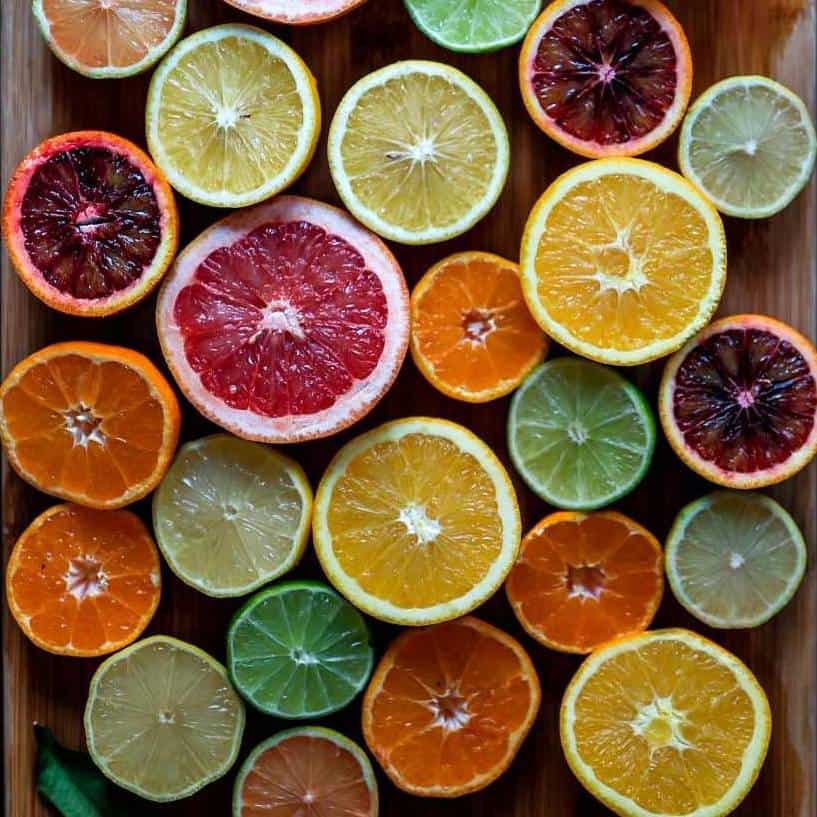In recent years, the seal density on our products in the supermarket has increased significantly. There is a seal for everything, from vegan, vegetarian, organic, regional to fair trade. Above all, products that or their ingredients have been transported from far away, such as cocoa from chocolate, bear such seals. They act as a kind of decision-making aid for buyers who value fair trade and the quality of their purchase. A question that keeps reaching us in this context is: How trustworthy are these seals from the supermarket? Can we rely on them when looking for fair and sustainably produced chocolate? Unfortunately, the answer to this question is not entirely satisfactory, because: It depends. In this article we want to talk about seals in general and the importance of the most important sustainability and fair trade labels on chocolate. Finally, we clarify whether there are trustworthy seals at all and what you should pay attention to when shopping.
Seals or so-called certifications are intended to help consumers make their purchasing decisions more easily. So instead of having to research for a long time ourselves whether the product offered corresponds to our "purchase morale", seals want to spare us this step. For example, if we value the organic quality of our food, the organic label shows us that the product meets these requirements. And it's not just food that bears the seal. Pretty much everything you can buy can also be labeled with certifications: cosmetics, building products, cleaning products, office supplies, ...
In the meantime, however, regrettably, consumer interests are no longer the focus of seals. Instead of being pure information systems, seals are now actually more of a marketing tool for the producer, but more on that later.
A seal is not just a seal. Because there are different groups in which these can be classified:
One group are state seals , such as the organic seal already mentioned. In order to receive this label, statutory requirements must be met. Then there are seals from interest groups and organizations , for example the well-known Fairtrade seal. They guarantee compliance with certain standards that these organizations have set themselves. With such labels, large differences in the expected standards are possible, depending on the focus of the respective seal issuer. Finally, there are seals that come from the respective companies themselves and are intended to emphasize certain "premium" properties of the product. The company thus determines the meaning of the seal itself. Many manufacturers, for example, do without the official vegan label. Instead, they simply design a proprietary seal themselves that lets consumers know that the product does not contain any ingredients of animal origin.
By the way, to "save" the official seal is exactly right in this context. Because using official labels costs money. For example, if the product is to be labeled with the vegan flower, a percentage of each product sold goes to the seal organization as a license fee. Alternatively, producers have to pay fees, including the cost of checking standards, to adorn their product with a particular label.
If we look at food or, quite explicitly, at chocolate, the diversity of the different seals becomes obvious. It is now important to many chocolate fans that the cocoa in their chocolate was produced fairly and sustainably. There are even several labels for fair trade. However, because sustainability takes place in different dimensions, the social, economic, ecological, ..., there is not a very specific seal for it. But some labels come relatively close to the idea.
Ecological sustainability, for example, can be guaranteed, at least to some extent, by organic farming. In organic farming, careful use of pesticides and plant protection products is important. Nevertheless, organic cultivation is not to be equated with sustainable cultivation. Because cocoa with the organic seal mostly comes from monocultures, which are known to be anything but ecologically sustainable. There are numerous seals for organic cultivation. Although these seals have a similar meaning, they have different strict requirements for the companies. The German and the EU organic seal do not have the strictest requirements and are in principle exactly the same. Bio-Land, Naturland and Demeter, on the other hand, have much stricter criteria and also take sustainability aspects into account.
Other seals, which supermarket chocolate in particular often carries, are intended to guarantee the fair trade of the product, i.e. the dimension of social sustainability. The most well-known is certainly the social seal " Fairtrade ". As the name suggests, it stands for social trade and can mostly be found on products that come from far away and therefore often from countries with poorly regulated worker protection legislation. Also known and found on many supermarket products: UTZ Certified. This should guarantee sustainability according to economic, social and ecological criteria. The last of the well-known labels in this context is Rainforest Alliance , for companies and their products that work according to environmental and social criteria.
In the next section we take a closer look at the last three labels.
In this section we want to take a closer look at the three largest Fairtrade seals and their meaning. Because even if they promise similar things, their focal points differ significantly from each other.

Probably the best-known label for fair trade clearly focuses on the producers. Small farmers in particular should be strengthened and given greater independence and self-determination. Fairtrade criteria for enforcing this are the payment of minimum prices to the farmers, social bonuses, living wages, pre-financing and, of course, fair trade . The Fairtrade seal has specially defined standards, compliance with which is checked by FLOCERT, the global Fairtrade certifier. However, the quality is not taken into account in the minimum price. In addition to quality, environmental issues are also of secondary importance for this label. In order to receive the seal, the cooperatives have to pay a little more than 5,000 euros.

Rainforest Alliance aims to protect biodiversity and agricultural production in harmony with nature. They rely on organic farming, the preservation of biodiversity and the promotion of education in the field of environment and agriculture. This certification system also has its own criteria, and compliance with these is checked by SAN, an association of non-profit environmental organizations. The admission fee is significantly lower than with Fairtrade, by a little more than half. However, even at the Rainforest Alliance, quality is secondary to organic farming. Instead of minimum prices, the Rainforest Alliance relies on empowering farmers to negotiate prices independently.
Last seal in the series is UTZ . Here the focus is on the end product and the various production steps. The focus is on sustainable, transparent agriculture and traceability. This is to be achieved by professionalizing cultivation and farm management. The basic idea behind this is that improving the growing conditions also leads to improvements in quality. The admission fee for a UTZ certification is roughly in the same range as for Rainbow Alliance. For this purpose, local and international certification partners check compliance with the UTZ standards.
UTZ has now merged with Rainbow Alliance. Therefore, sooner or later it will probably disappear from the market.

The last thing to mention is GEPA . This is not a seal in the classic sense, because GEPA is one of the largest European fair trade companies. It imports products and raw materials from disadvantaged producers on fair terms and markets them in Germany. The company wants to use fair trade to improve the living conditions of structurally and economically disadvantaged people. The payment of fair prices, pre-financing on request by the producers and long-term trade relationships are some of the pillars on which the company relies.
The ugly truth about certifications is: Unfortunately, most seals don't keep what they promise and are used more as a marketing tool today. With regard to the meaning of seals and the actual implementation, various points are problematic:
One of the problems with seals is related to the certification process. One might think that the seal is only awarded if all standards are met. In practice, however, a distinction is made between mandatory and optional criteria. Often the label is also awarded if the criteria are not fully met. In this case, the producers receive fulfillment criteria with a relatively long period of 1-3 years. The seal meaning washes out like this.
Another problem is that in the case of mixed products, i.e. products made from more than one ingredient, only a certain percentage has to have been traded in accordance with the criteria in order for the label to be printed. With the Fairtrade seal, for example, this is only 20 percent. So if only a fifth of the ingredients were fairly traded, the product can already adorn itself with the seal. At UTZ, such a minimum percentage is not prescribed at all. GEPA is the strictest at 50 percent.
Another tactic to deceive customers lies in the practice of volume balancing. Fair and non-fair traded products are mixed and some of them are then advertised as fair. So if you have a product in your hand that says Fairtrade, it's always best to take a closer look. Many producers hide the reference to the quantity equalization in small letters on the back of the packaging.
This deception is only possible at all because there is a clear lack of suitable laws and rules in Germany, or worldwide, as far as the awarding of the seal is concerned. Clear legal requirements in favor of consumers could remedy this deception.
The goal of improving the living conditions of disadvantaged producers is something that all seals have in common. So all seals pursue a similar goal and have a similar meaning, but have different focuses.
According to the results of a study financed by the Swiss State Secretariat for Economic Affairs, seals actually improve the livelihoods of farmers. On average, the yield and the sales prices increase. However, the results vary between the labels: on average, Fairtrade leads to an increase in farmers' yields of 13 percent, with Rainforest Alliance it is 15 percent and with UTZ as much as 32 percent. Selling prices increase by an average of 9% for Fairtrade, 10 percent for Rainforest Alliance and just 4 percent for UTZ.
The labels actually lead to an improvement in the cultivation conditions of the producers. However, lax specifications and tricks lead to an obvious deception of consumers.
In plain language this means: If you want to be sure that your chocolate comes from sustainable and fair cultivation, you cannot avoid doing a certain amount of your own research. Basically and as always, when it comes to chocolate, a transparent bean-to-bar approach is ultimately the best way to guarantee good growing conditions with fair – mostly direct – trade and quality.
If you explicitly want to learn more about the problem of seals, you might also be interested in our articles " What is the criticism of the Fairtrade system " and "What does the B-Corp seal stand for" !
Apart from your own research, you are also welcome to take a look around in our Theyo shop . We put an incredible amount of time into researching and checking the manufacturers whose chocolates we sell. Our selection criteria are clearly defined and focus on fair payment (far above Fairtrade standards) and sustainable forms of cultivation (mostly far above organic standards and usually in a permaculture environment without deforestation of rainforests) as well as production in the country of origin of the cocoa.
What are seals for?
Seals or so-called certifications are intended to help consumers make their purchasing decisions more easily. So instead of having to research for a long time ourselves whether the product offered corresponds to our "purchase morale", seals want to spare us this step. For example, if we value the organic quality of our food, the organic label shows us that the product meets these requirements. And it's not just food that bears the seal. Pretty much everything you can buy can also be labeled with certifications: cosmetics, building products, cleaning products, office supplies, ...In the meantime, however, regrettably, consumer interests are no longer the focus of seals. Instead of being pure information systems, seals are now actually more of a marketing tool for the producer, but more on that later.
It is interesting that there are different seal groups:
A seal is not just a seal. Because there are different groups in which these can be classified: One group are state seals , such as the organic seal already mentioned. In order to receive this label, statutory requirements must be met. Then there are seals from interest groups and organizations , for example the well-known Fairtrade seal. They guarantee compliance with certain standards that these organizations have set themselves. With such labels, large differences in the expected standards are possible, depending on the focus of the respective seal issuer. Finally, there are seals that come from the respective companies themselves and are intended to emphasize certain "premium" properties of the product. The company thus determines the meaning of the seal itself. Many manufacturers, for example, do without the official vegan label. Instead, they simply design a proprietary seal themselves that lets consumers know that the product does not contain any ingredients of animal origin.
By the way, to "save" the official seal is exactly right in this context. Because using official labels costs money. For example, if the product is to be labeled with the vegan flower, a percentage of each product sold goes to the seal organization as a license fee. Alternatively, producers have to pay fees, including the cost of checking standards, to adorn their product with a particular label.
What are the most common seals on chocolate?
If we look at food or, quite explicitly, at chocolate, the diversity of the different seals becomes obvious. It is now important to many chocolate fans that the cocoa in their chocolate was produced fairly and sustainably. There are even several labels for fair trade. However, because sustainability takes place in different dimensions, the social, economic, ecological, ..., there is not a very specific seal for it. But some labels come relatively close to the idea. Ecological sustainability, for example, can be guaranteed, at least to some extent, by organic farming. In organic farming, careful use of pesticides and plant protection products is important. Nevertheless, organic cultivation is not to be equated with sustainable cultivation. Because cocoa with the organic seal mostly comes from monocultures, which are known to be anything but ecologically sustainable. There are numerous seals for organic cultivation. Although these seals have a similar meaning, they have different strict requirements for the companies. The German and the EU organic seal do not have the strictest requirements and are in principle exactly the same. Bio-Land, Naturland and Demeter, on the other hand, have much stricter criteria and also take sustainability aspects into account.
Other seals, which supermarket chocolate in particular often carries, are intended to guarantee the fair trade of the product, i.e. the dimension of social sustainability. The most well-known is certainly the social seal " Fairtrade ". As the name suggests, it stands for social trade and can mostly be found on products that come from far away and therefore often from countries with poorly regulated worker protection legislation. Also known and found on many supermarket products: UTZ Certified. This should guarantee sustainability according to economic, social and ecological criteria. The last of the well-known labels in this context is Rainforest Alliance , for companies and their products that work according to environmental and social criteria.
In the next section we take a closer look at the last three labels.
The meaning of the most common fair trade and sustainability seals
In this section we want to take a closer look at the three largest Fairtrade seals and their meaning. Because even if they promise similar things, their focal points differ significantly from each other.Let's start with the Fairtrade seal and what it means:

Probably the best-known label for fair trade clearly focuses on the producers. Small farmers in particular should be strengthened and given greater independence and self-determination. Fairtrade criteria for enforcing this are the payment of minimum prices to the farmers, social bonuses, living wages, pre-financing and, of course, fair trade . The Fairtrade seal has specially defined standards, compliance with which is checked by FLOCERT, the global Fairtrade certifier. However, the quality is not taken into account in the minimum price. In addition to quality, environmental issues are also of secondary importance for this label. In order to receive the seal, the cooperatives have to pay a little more than 5,000 euros.
What is the meaning of the Rainforest Alliance seal?

Rainforest Alliance aims to protect biodiversity and agricultural production in harmony with nature. They rely on organic farming, the preservation of biodiversity and the promotion of education in the field of environment and agriculture. This certification system also has its own criteria, and compliance with these is checked by SAN, an association of non-profit environmental organizations. The admission fee is significantly lower than with Fairtrade, by a little more than half. However, even at the Rainforest Alliance, quality is secondary to organic farming. Instead of minimum prices, the Rainforest Alliance relies on empowering farmers to negotiate prices independently.
And what about NEWT?
Last seal in the series is UTZ . Here the focus is on the end product and the various production steps. The focus is on sustainable, transparent agriculture and traceability. This is to be achieved by professionalizing cultivation and farm management. The basic idea behind this is that improving the growing conditions also leads to improvements in quality. The admission fee for a UTZ certification is roughly in the same range as for Rainbow Alliance. For this purpose, local and international certification partners check compliance with the UTZ standards.UTZ has now merged with Rainbow Alliance. Therefore, sooner or later it will probably disappear from the market.

And what about GEPA?
The last thing to mention is GEPA . This is not a seal in the classic sense, because GEPA is one of the largest European fair trade companies. It imports products and raw materials from disadvantaged producers on fair terms and markets them in Germany. The company wants to use fair trade to improve the living conditions of structurally and economically disadvantaged people. The payment of fair prices, pre-financing on request by the producers and long-term trade relationships are some of the pillars on which the company relies.
Which seals of approval are trustworthy?
The ugly truth about certifications is: Unfortunately, most seals don't keep what they promise and are used more as a marketing tool today. With regard to the meaning of seals and the actual implementation, various points are problematic:
No complete fulfillment of the seal criteria
One of the problems with seals is related to the certification process. One might think that the seal is only awarded if all standards are met. In practice, however, a distinction is made between mandatory and optional criteria. Often the label is also awarded if the criteria are not fully met. In this case, the producers receive fulfillment criteria with a relatively long period of 1-3 years. The seal meaning washes out like this.
Products with the Fairtrade seal: "Fair" trade, but not 100 percent
Another problem is that in the case of mixed products, i.e. products made from more than one ingredient, only a certain percentage has to have been traded in accordance with the criteria in order for the label to be printed. With the Fairtrade seal, for example, this is only 20 percent. So if only a fifth of the ingredients were fairly traded, the product can already adorn itself with the seal. At UTZ, such a minimum percentage is not prescribed at all. GEPA is the strictest at 50 percent. Another tactic to deceive customers lies in the practice of volume balancing. Fair and non-fair traded products are mixed and some of them are then advertised as fair. So if you have a product in your hand that says Fairtrade, it's always best to take a closer look. Many producers hide the reference to the quantity equalization in small letters on the back of the packaging.
This deception is only possible at all because there is a clear lack of suitable laws and rules in Germany, or worldwide, as far as the awarding of the seal is concerned. Clear legal requirements in favor of consumers could remedy this deception.
Our conclusion on the seal system: A nice idea, but there is a problem with the execution
The goal of improving the living conditions of disadvantaged producers is something that all seals have in common. So all seals pursue a similar goal and have a similar meaning, but have different focuses.
So what about the producers who have invested in seals?
According to the results of a study financed by the Swiss State Secretariat for Economic Affairs, seals actually improve the livelihoods of farmers. On average, the yield and the sales prices increase. However, the results vary between the labels: on average, Fairtrade leads to an increase in farmers' yields of 13 percent, with Rainforest Alliance it is 15 percent and with UTZ as much as 32 percent. Selling prices increase by an average of 9% for Fairtrade, 10 percent for Rainforest Alliance and just 4 percent for UTZ.The labels actually lead to an improvement in the cultivation conditions of the producers. However, lax specifications and tricks lead to an obvious deception of consumers.
In plain language this means: If you want to be sure that your chocolate comes from sustainable and fair cultivation, you cannot avoid doing a certain amount of your own research. Basically and as always, when it comes to chocolate, a transparent bean-to-bar approach is ultimately the best way to guarantee good growing conditions with fair – mostly direct – trade and quality.
If you explicitly want to learn more about the problem of seals, you might also be interested in our articles " What is the criticism of the Fairtrade system " and "What does the B-Corp seal stand for" !



